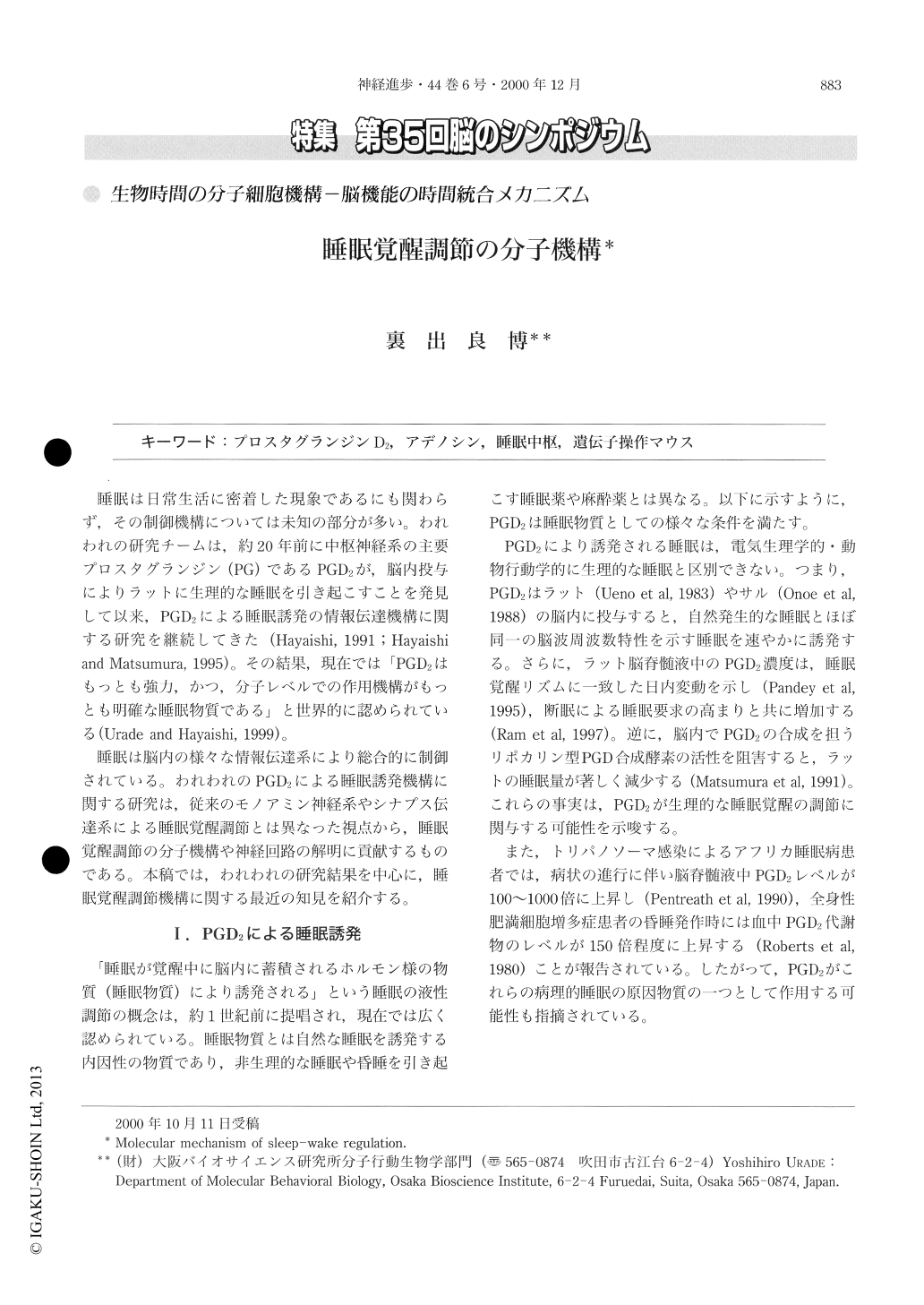Japanese
English
- 有料閲覧
- Abstract 文献概要
- 1ページ目 Look Inside
睡眠は日常生活に密着した現象であるにも関わらず,その制御機構については未知の部分が多い。われわれの研究チームは,約20年前に中枢神経系の主要プロスタグランジン(PG)であるPGD2が,脳内投与によりラットに生理的な睡眠を引き起こすことを発見して以来,PGD2による睡眠誘発の情報伝達機構に関する研究を継続してきた(Hayaishi,1991;Hayaishiand Matsumura,1995)。その結果,現在では「PGD2はもっとも強力,かっ,分子レベルでの作用機構がもっとも明確な睡眠物質である」と世界的に認められている(Urade and Hayaishi,1999)。
睡眠は脳内の様々な情報伝達系により総合的に制御されている。われわれのPGD2による睡眠誘発機構に関する研究は,従来のモノアミン神経系やシナプス伝逹系による睡眠覚醒調節とは異なった視点から,睡眠覚醒調節の分子機構や神経回路の解明に貢献するものである。本稿では,われわれの研究結果を中心に,睡眠覚醒調節機構に関する最近の知見を紹介する。
Prostaglandin (PG) D2is the most potent endogenous sleep-promoting substance, and its mechanism of action is the best characterized among the various sleep substances thus far reported. PGD synthase, the enzyme that produces PGD2, is dominantly localized in the arachnoid membrane in the brain of various mammals and is secreted into the cerebrospinal fluid (CSF) as beta-trace, a major CSF protein. PGD2 thus produced is secreted into the CSF and circulates within the brain as a neurohormone.

Copyright © 2000, Igaku-Shoin Ltd. All rights reserved.


